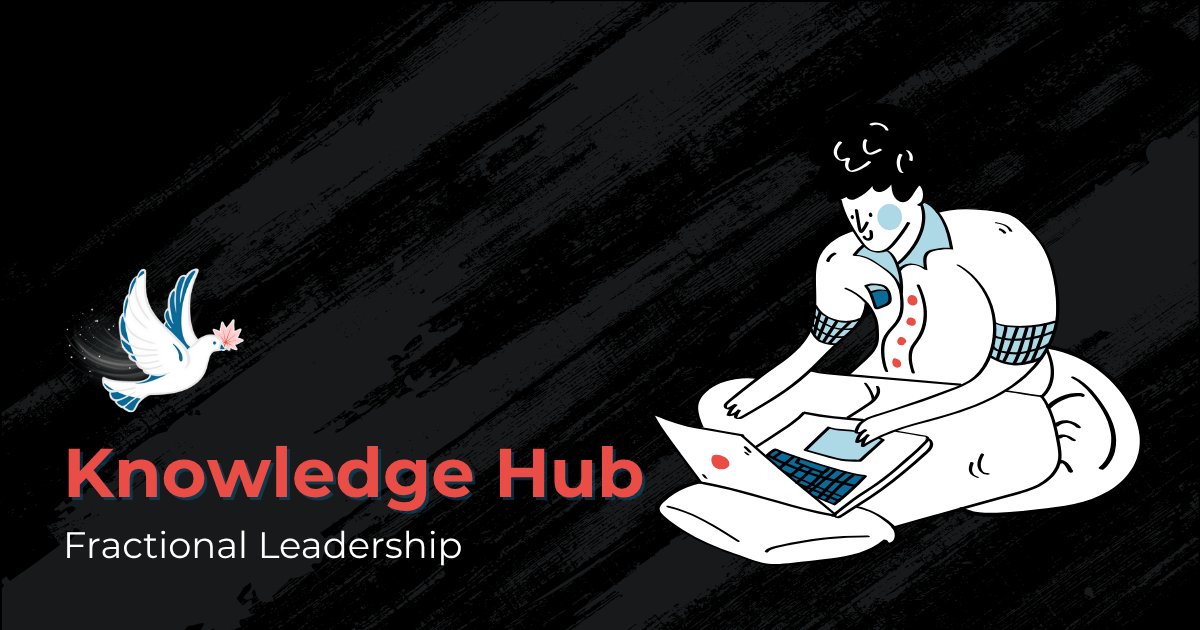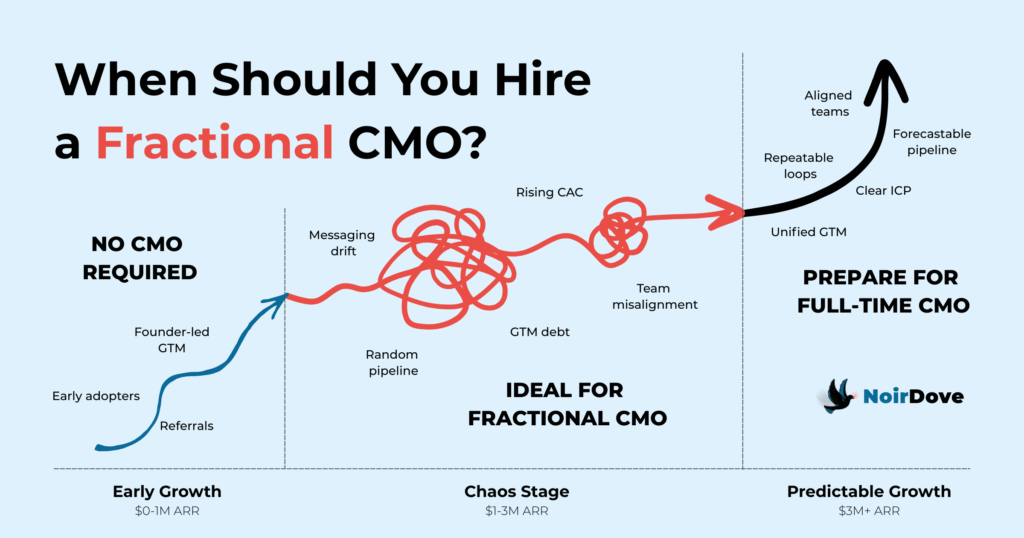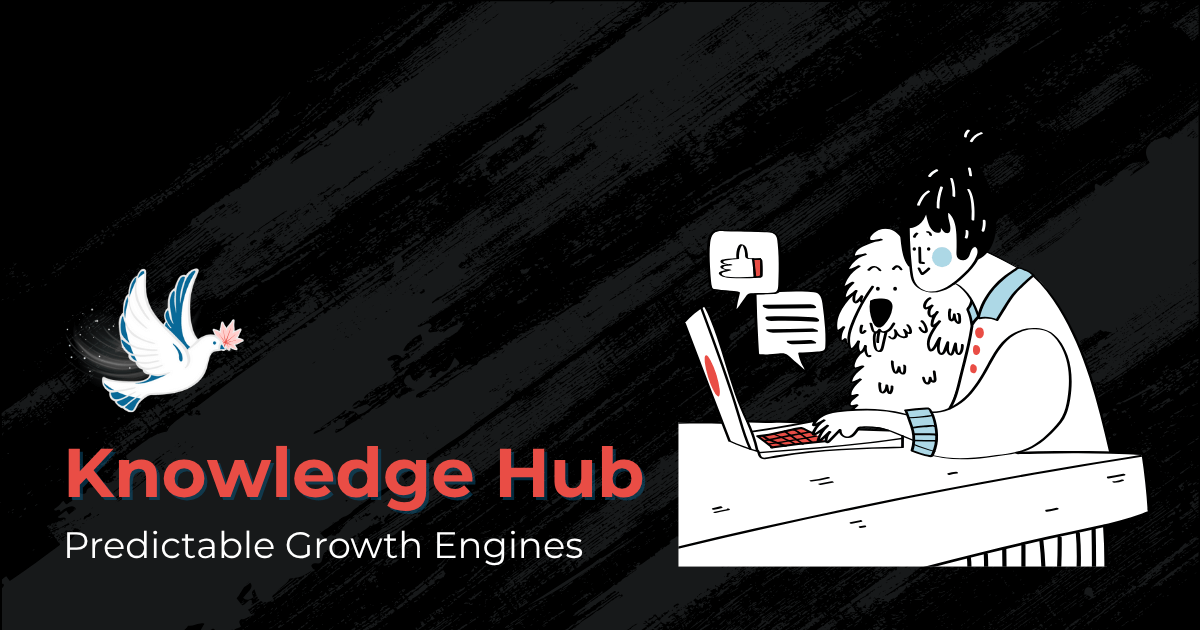When to Hire a Fractional CMO: For Founders on the $1–10M Journey

The hardest stage of the journey in a startup is to grow from $1M to $10M ARR. You’re no longer early, but you’re not fully scaled yet. Founder-led GTM starts to break at this stage. Channels stop functioning the way they used to. The teams are busy, but growth starts to be unpredictable.
This is where most companies need strategic marketing leadership, but a full-time CMO is too expensive or too early. A fractional CMO gives you senior leadership, strategy, and GTM clarity without the long-term cost.
A fractional CMO builds the structure that creates predictable revenue.
Why Founders Should Consider a Fractional CMO
After $1M ARR, you need more than hustle for growth: You need strategic clarity, mature systems, and cross-functional alignment. Without leadership, too often the marketing team will react instead of lead.
A fractional CMO fills this leadership gap and creates the GTM foundation your company needs for the next stage.
Key problems they solve:
- unclear positioning and weak narrative
- unpredictable pipeline
- increasing CAC
- poor channel ROI
- sales and marketing misalignment
- junior teams without a strategic head
- scattered implementation and mixed messages
When to Hire a Fractional CMO
Below are the 10 most important signs that tell you when to bring in a fractional CMO. Each directly applies to founders scaling from $1M to $10M ARR.
1. When growth becomes unpredictable
Your pipeline feels random. One month it’s strong, the next it’s flat. The team can’t explain the swings. Output doesn’t equal outcome.
A fractional CMO identifies the root cause, then builds the system that makes growth steady again. They remove the guesswork so you can forecast with confidence.
2. When GTM depends on activity and not strategy
You see a lot of work happening, but not a lot of impact. The teams are busy, not aligned. You’re producing posts, ads, and campaigns without clear direction.
A fractional CMO develops a plan that states what to do, why it’s important, and how it relates to revenue.
3. When founder-led marketing is holding you back
You’re still writing emails. Still planning campaigns. Still guiding the narrative. This is a bottleneck that slows everything down.
A fractional CMO takes ownership of messaging, positioning, and planning so you can focus on the business, not the marketing to-do list.
4. When the marketing team lacks senior guidance
You may have good people, but they do not have a strong leader. They execute tasks but cannot build strategy. This creates scattered efforts.
The fractional CMO becomes the strategic head with which your team relies. They create clarity, direction, and a standard for everyone to follow.
5. When CAC keeps rising
Paid channels start to deliver weaker results. Outbound feels harder. Your team has to spend more to acquire the same leads.
A fractional CMO finds out what’s driving up CAC and redesigns your ICP, messaging, channels, and offer strategy to bring CAC down once again.
6. When sales and marketing blame each other
Sales says leads are bad.
Marketing says that sales does not follow up.
Both are right, and both are wrong.
A fractional CMO aligns the teams under one story, one ICP, and one measurement system. This all by itself can unlock massive growth.
7. When you’re about to raise capital
Investors expect clear ICP, strong narrative, predictable pipeline, and a believable GTM plan. Many founders fail because they are intuitive and do not use models.
A fractional CMO can rewrite your narrative, build your GTM roadmap, and strengthen your pitch. This often directly correlates with your valuation.
8. If you have plans to expand into other regions
Scaling into new countries is not about translating content. It requires new messaging, new channel selection, and new buyer psychology.
Fractional CMO leads region expansion based on patterns from global GTM experience.
9. When you can’t tell which channels are working
You are spending on multiple channels, but attribution is unclear. You don’t know which channels actually create pipeline.
A fractional CMO brings in the data clarity, dashboards, and operational discipline needed to make informed decisions.
10. When placement seems weak or vague
If people can’t describe in one line what you do, then you’ve got a positioning problem. This silently kills deals and adds friction.
A fractional CMO will tighten your message, sharpen your category, and develop a narrative that sticks in the market.

20 Practical Use Cases Where a Fractional CMO Makes an Immediate Impact
GTM and Strategy
- Redesigning the GTM to fit the 1–10M stage
- ICP and buyer segment clarification
- Refining value propositions
- Rebuilding the pricing and packaging strategy
- Creating a 12-month marketing roadmap
Pipeline and Revenue
- Building predictable inbound
- Strengthening demand generation engines
- Improvement in conversion across the full funnel
- Reducing CAC and optimizing budgets
- Fixing nurture flows and broken follow-up systems
Team Leadership
- Managing Agencies and Freelancers
- Mentoring junior marketers
- Aligning sales and marketing teams
- Introduction of revenue dashboards and attribution models
- Create repeatable content creation
Growth and Expansion
- Preparing GTM for Fundraising
- Planning strategies for region expansion
- Strengthening retention and expansion workflows
- Introduction to PLG and hybrid motions
- Reducing founder dependency in GTM and marketing
Frequently Asked Questions (FAQs)
1. At what point is it advisable to hire a fractional CMO?
The best time is between $1M and $10M ARR. You have enough traction to benefit from strategy, but not enough GTM maturity to justify a full-time CMO. This is when you have the biggest ROI from fractional leadership.
2. How is a fractional CMO different from a marketing manager?
A marketing manager performs the tasks. A fractional CMO provides direction, creates the GTM model, aligns teams, and owns the strategy. They do the work an executive would do, not the work a coordinator would do.
3. How long should a fractional CMO engagement last?
Most companies see strong results in 6 to 18 months. This is enough time to build systems, create alignment, and make the growth engine self-sustaining.
4. Should a fractional CMO replace an agency or team?
No, they make them stronger. A fractional CMO leads your team, manages agencies, and makes sure everyone works to one plan. They bring cohesion, not replacement.
5. How do I measure success with a fractional CMO?
You should see clearer ICP, stronger messaging, predictable pipeline, better conversion, lower CAC, and improved sales and marketing alignment. These indicators show the GTM is maturing.


